Abstract
Derivatives of Myxococcus xanthus FBt resistant to chloramphenicol (25 μg/ml) arose spontaneously with a frequency of approximately 10−7. One of these organisms (FBtCam1r) was characterized. FBtCam1r showed a unique type of phenotypic instability. After transfer from medium containing chloramphenicol to medium lacking the drug, resistance was lost after approximately one generation. The loss resulted in a sharp drop in the total number of chloramphenicol-resistant organisms and was not due to segregation of chloramphenicol-susceptible organisms during growth. Cell-free extracts of strain FBtCam1r converted chloramphenicol to acetyl chloramphenicols in a fashion implicating activity of chloramphenicol acetyltransferase. This activity was lost simultaneously with the loss of chloramphenicol resistance after removal of the drug from cultures. Organisms with a similar phenotype to FBtCam1r could be produced at high frequencies when strain FBt was exposed to low concentrations of chloramphenicol (2 to 5 μg/ml), to 3-acetylchloramphenicol (25 μg/ml), or to 1,3-diacetylchloramphenicol (25 μg/ml). Since strain FBt is capable of deacetylating acetyl chloramphenicols, these effects are probably all due to low concentrations of chloramphenicol. In the presence of chloramphenicol, FBtCam1r produced fruiting bodies and myxospores on fruiting agar; however, glycerol-induced myxospore formation was inhibited. In the absence of the antibiotic, chloramphenicol resistance was maintained by glycerol-induced myxospores.
Full text
PDF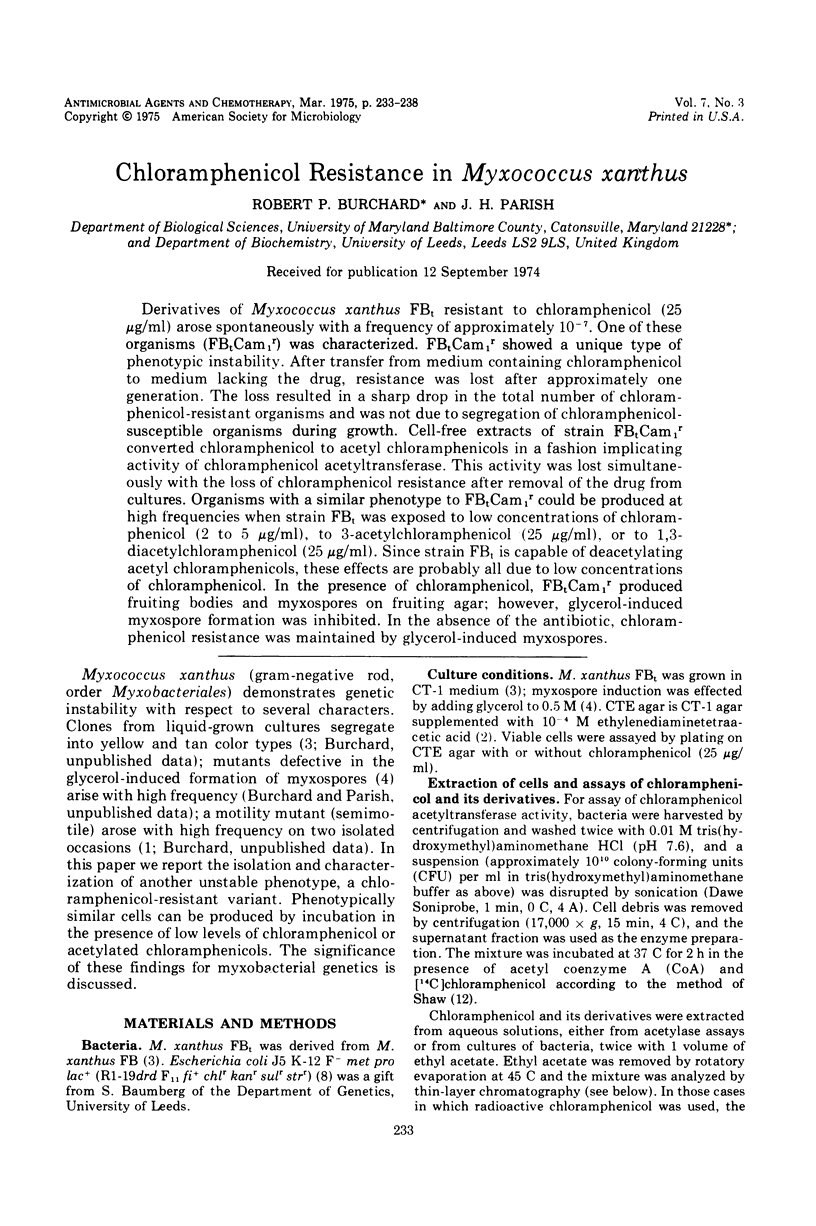
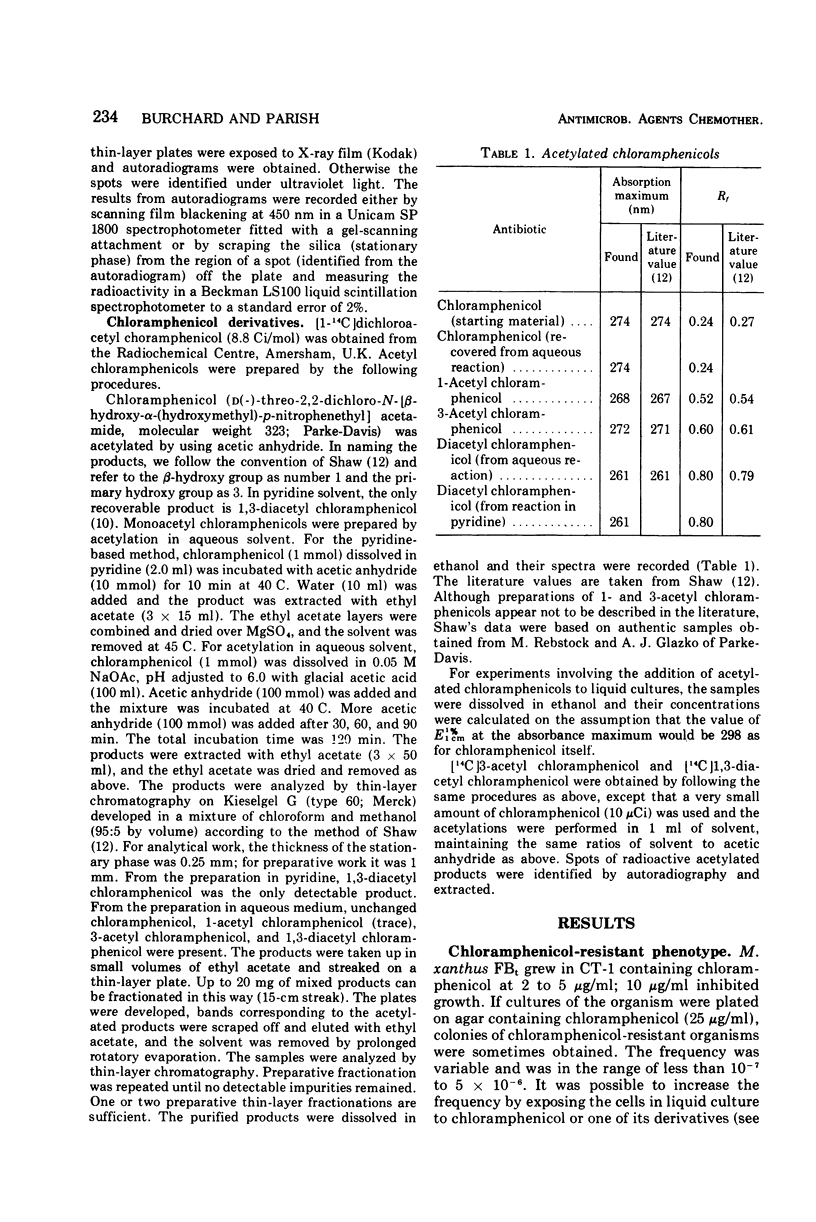
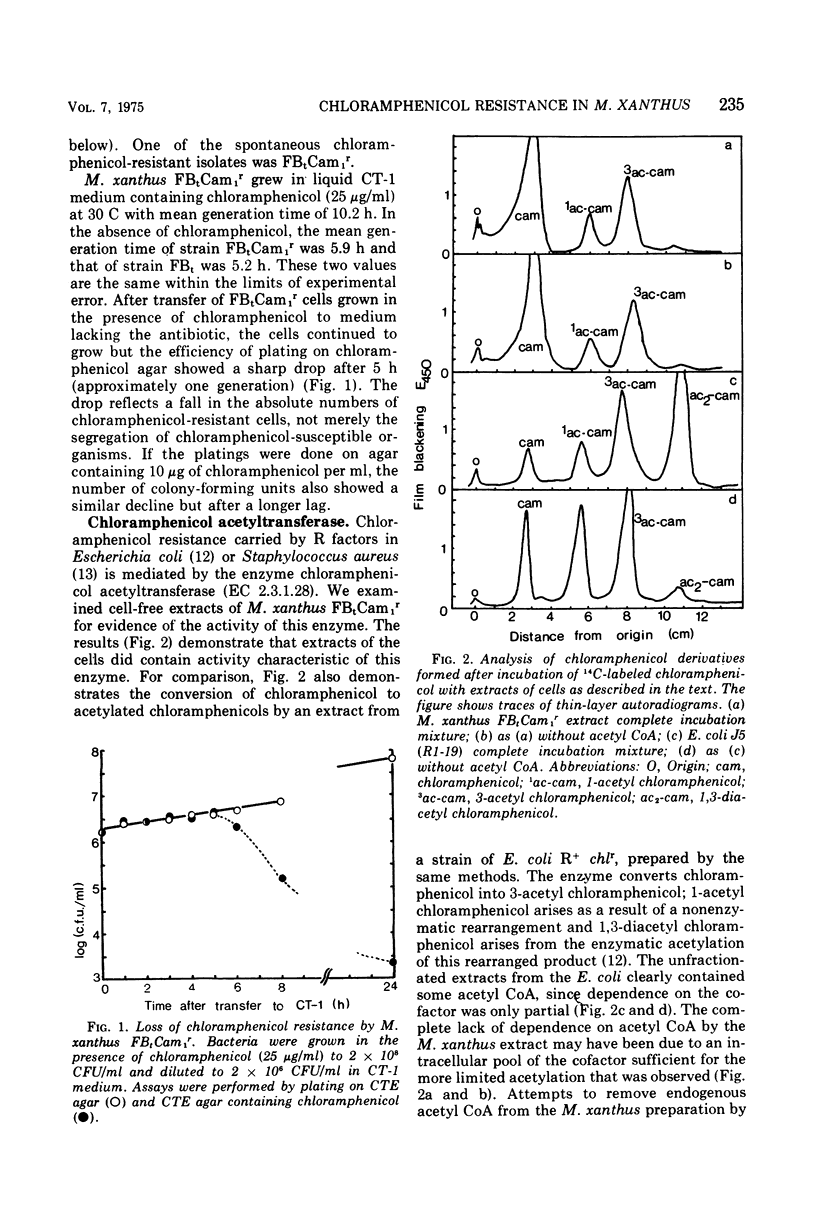
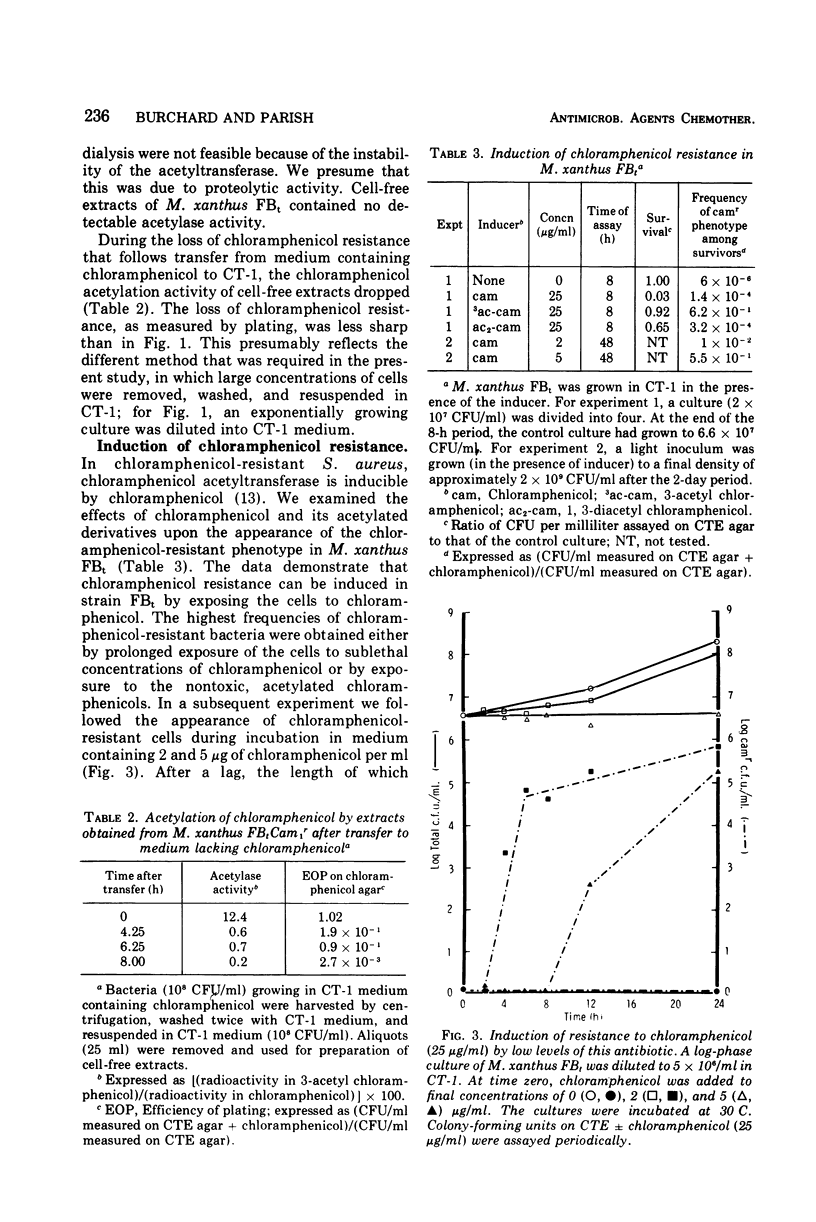
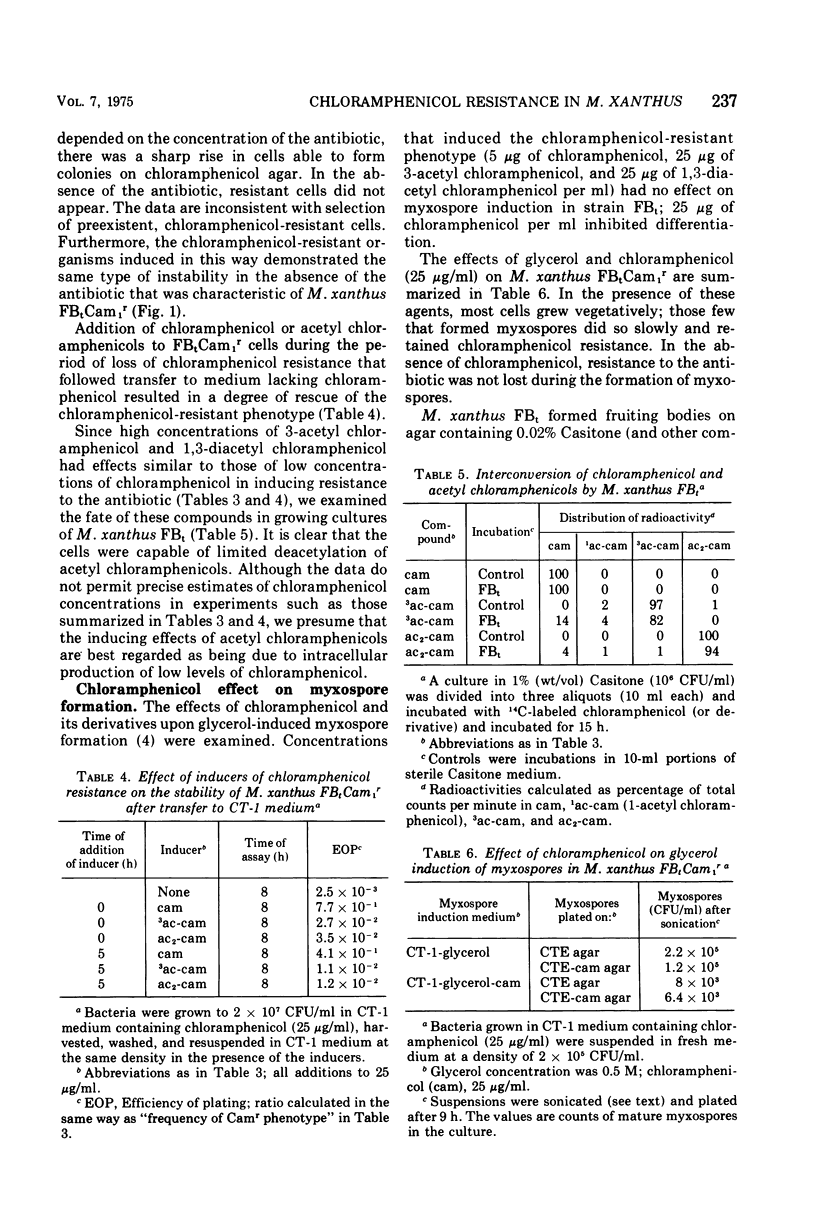
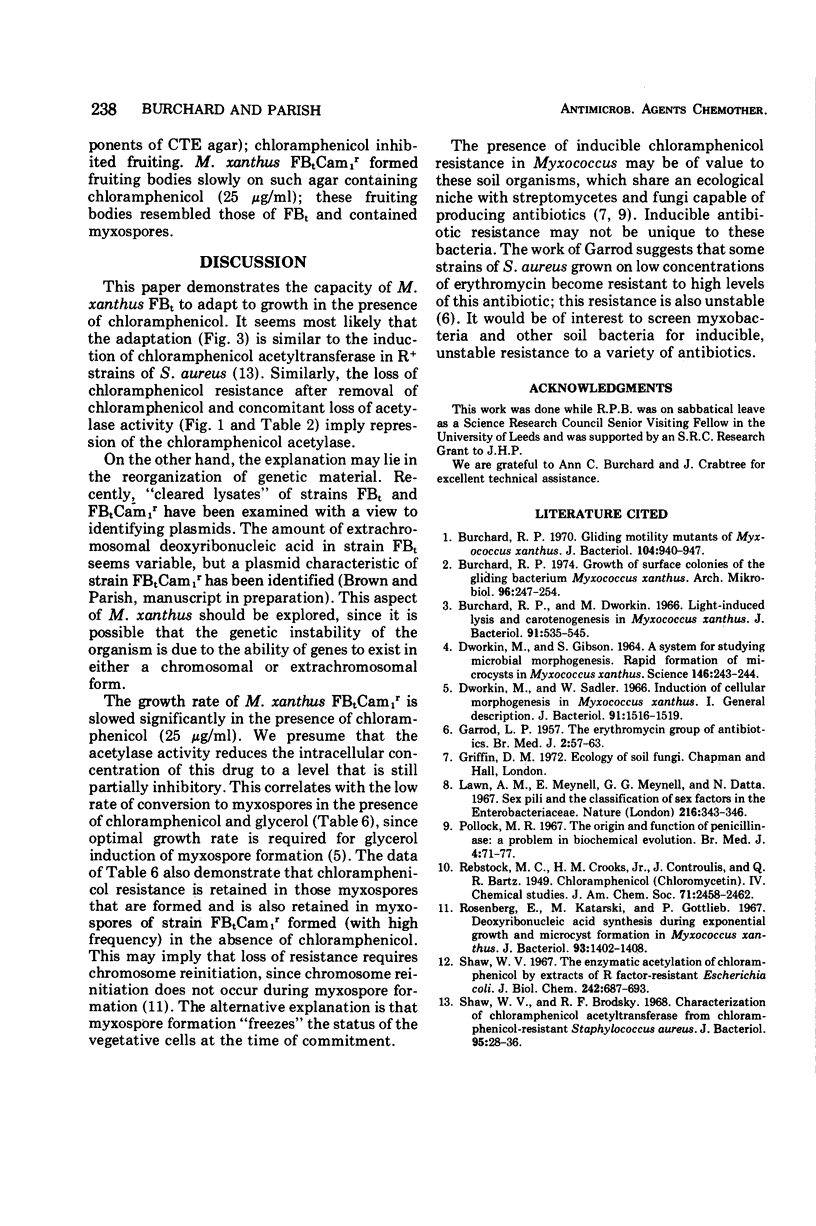
Selected References
These references are in PubMed. This may not be the complete list of references from this article.
- Burchard R. P., Dworkin M. Light-induced lysis and carotenogenesis in Myxococcus xanthus. J Bacteriol. 1966 Feb;91(2):535–545. doi: 10.1128/jb.91.2.535-545.1966. [DOI] [PMC free article] [PubMed] [Google Scholar]
- Burchard R. P. Gliding motility mutants of Myxococcus xanthus. J Bacteriol. 1970 Nov;104(2):940–947. doi: 10.1128/jb.104.2.940-947.1970. [DOI] [PMC free article] [PubMed] [Google Scholar]
- Burchard R. P. Growth of surface colonies of the gliding bacterium Myxococcus xanthus. Arch Microbiol. 1974 Mar 7;96(3):247–254. doi: 10.1007/BF00590180. [DOI] [PubMed] [Google Scholar]
- DWORKIN M., GIBSON S. M. A SYSTEM FOR STUDYING MICROBIAL MORPHOGENESIS: RAPID FORMATION OF MICROCYSTS IN MYXOCOCCUS XANTHUS. Science. 1964 Oct 9;146(3641):243–244. doi: 10.1126/science.146.3641.243. [DOI] [PubMed] [Google Scholar]
- Dworkin M., Sadler W. Induction of cellular morphogenesis in Myxococcus xanthus. I. General description. J Bacteriol. 1966 Apr;91(4):1516–1519. doi: 10.1128/jb.91.4.1516-1519.1966. [DOI] [PMC free article] [PubMed] [Google Scholar]
- GARROD L. P. The erythromycin group of antibiotics. Br Med J. 1957 Jul 13;2(5036):57–63. doi: 10.1136/bmj.2.5036.57. [DOI] [PMC free article] [PubMed] [Google Scholar]
- Lawn A. M., Meynell G. G., Meynell E., Datta N. Sex pili and the classification of sex factors in the enterobacteriaceae. Nature. 1967 Oct 28;216(5113):343–346. doi: 10.1038/216343a0. [DOI] [PubMed] [Google Scholar]
- Pollock M. R. Origin and function of penicillinase: a problem in biochemical evolution. Br Med J. 1967 Oct 14;4(5571):71–77. doi: 10.1136/bmj.4.5571.71. [DOI] [PMC free article] [PubMed] [Google Scholar]
- Rosenberg E., Katarski M., Gottlieb P. Deoxyribonucleic acid synthesis during exponential growth and microcyst formation in Myxococcus xanthus. J Bacteriol. 1967 Apr;93(4):1402–1408. doi: 10.1128/jb.93.4.1402-1408.1967. [DOI] [PMC free article] [PubMed] [Google Scholar]
- Shaw W. V., Brodsky R. F. Characterization of chloramphenicol acetyltransferase from chloramphenicol-resistant Staphylococcus aureus. J Bacteriol. 1968 Jan;95(1):28–36. doi: 10.1128/jb.95.1.28-36.1968. [DOI] [PMC free article] [PubMed] [Google Scholar]
- Shaw W. V. The enzymatic acetylation of chloramphenicol by extracts of R factor-resistant Escherichia coli. J Biol Chem. 1967 Feb 25;242(4):687–693. [PubMed] [Google Scholar]


